Wilhelm Gueinzius, the naturalist |
Updated: 01/18/2010 | ||||||||||||||
|
He was born in Trotha near Halle in Saxony-Anhalt, Prussia,
on March 15th, 1813 and died as a single on January 24, 1874
in the Grey's hospital in Pietermaritzburg in Natal, South Africa. As usual in his family, he should become minister. [1] Therefore, he became pupil at the grammar school of the "Franckesche Stiftung" in Halle, listed at AFSt/ SL 8, page 35, registration No. 16267 on April 24, 1825 [2]. Like His brothers he walked every morning from Trotha to Halle to the grammar school. However, the school was nothing for him and so he left it after the sixth class at Easter 1829 and went to the city school. A report of 1833 certified him in diligence, behaviour and progress in learning a mediocre performance [3]. Therefore, to study was not possible. So, he turned to pharmacy and took an education to the druggist assistant in 1833. Afterwards he was employed at the pharmacy of the famous hospital of Charité in Berlin between 1836 and 1837. Then he was working at a pharmacy in Dessau where he made acquaintance to some famous families. In such a way, he also learned to know the police director Brueckner who introduced him with the founder of the zoological museum in Leipzig Prof. Poepping. Prof. Poepping was very much interested to find collectors who increased the inventory of his museum. So, Prof. Poepping supported actively the wish of Wilhelm Gueinzius to become naturalist and collector in far worlds. [4] |
On this page: To South Africa To Natal Back in Cape Towm Again to Natal The disagreement with Prof. Poepping His paradise His death His work Sources | ||||||||||||||
|
To South AfricaProf. Poepping advised him to go to South Africa, to accept a middle class position in the cape country and to operate collecting natural products as additional earnings [3]. Poepping got him a ship, which should bring him to South Africa in September 1838, where he finally arrived in 1839 [4]. Through a testimonial of Poepping to a friend of him a druggist Juritz in Cape Town, Wilhelm Gueinzius found an employment as an assistant. Juritz also supported him in the following time financially and by forwarding his collections and letters [3]. From 1839 to December 1840 he collected in the cape colony, in the Hottentots country , in particular in the district Stellenbosch and lived there temporary in the house of the lay magistrate Theunnessen at the village Sommerset, about 40 kms southeast of Cape Town. It was Prof. Poepping who bought his collections from him and supports him in priming. Collecting and priming did not work out correctly at the beginning [3]. His consignments with zoological preparations were not carefully enough produced. In such a way, he only received little money for his work and sank into poverty so that he had to darn his clothing himself. Later it goes a little bit better. In order to be able to make his living he incidentally operated a medical practice, which did not pay a lot. However, his debts also pressed him in addition to the costs for daily maintenance that he had made since his arrival in South Africa. He had 64 £ sterling lent from a Mr Barth; those were to be paid with 7% interest [3]. In order to be more mobile for excursions to the deeper country Wilhelm Gueinzius wished to get a cape car with oxen that he expected to purchase for 200 Reichstalers. A wish which he could fulfil himself in Natal only later. He would gladly also have gone into other continents, among other things to Ceylon. Around 1840 he finally moved into the region around Swellendam, about 160 kms east of Cape Town. [3] 1Fig.: Rosacea, type Cliffortia intermedia Eckl. & Zeyh., collected by Wilhelm Gueinzius, initial of the herbarium Meisner, in a provided with collecting memos of D. Nueklenbeck from 1844, today in Botanical Garden New York. He already wanted to start with the evangelic Berlin Mission via sea to Durban and to the Zulu, when the smallpox broke out, and he expected good gains in his medical practice. Therefore he returned to Cape Town and remained there until the 1841. He sent several parcels to Germany from there. Included a beautiful ostrich and snakes. [3] Fig.2: Euphorbiaceae Cluytia meyeriana Müll. Arg. var. subopaca Müll. Arg., collected by Wilhelm Gueinzius, initial of the herbarium Meisner, in a provided with collecting memos of D. Nueklenbeck from 1844, today in Botanical Garden New York. |
Hottentots, denotation of themselves Khoi-Khoin - human being of the people, on average, the men are 1.44 m large, initially herdsman nomads specialised in breeding of big animals who inhabited the southern Africa and who were pushed from the white to the North and East. [5]  |
||||||||||||||
|
To NatalThe coast of Natal was sighted on December 25, 1497 for the first time by Vasco Gama and therefore he called it Terra natalis according to the Portuguese Natal - Christmas. Since 1837 the region was colonised by the Boers, the Voortrekkers, and annexed by Great Britain in 1843; first as a part of the cape colony, from July 15, 1856 at as a independent crown colony, 1893 received autonomy and has been province of the today Republic of South Africa since 1910. Natal mainly consists of mountain country, that increase from Indian Ocean to the Drackensberge in the West [5] & [Internet research]. In Port Natal Vasco Gama landed on Christmas day 1497 and he called the natural port bay Rio de Natal (Christmas flow) in assumption that the lagoon was an estuary. Others who recognised the error later renamed the bay postage in Port Natal. 1835 British coloniser settled in the bay and established a city that they designated according to the former governor of the British cape colony Sir Benjamin D'Urban. [Internet investigation] When Wilhelm Gueinzius stayed in Cape Town, it had begun the time of the fights of the Englishman against the Zulu and Bushmen . He writes home that Dingon , a Zulu chief for a long time, is dead, that the Boers fight against the Bushmen, and 300 Englishmen soon will embarked to the Bay of Natal , in order to take the bay into possession.[3] Dingon or Dingane was the successor of Tschaka (Shaka) as a upper chief the Zulu and was murdered after the lost battle against the Boers at the River of Blood on December 16, 1838 after his flight to Swaziland in 1840. [Internet investigation] Although the English coloniser in D'Urban required annexation Natal by the governor of the cape colony, the English colonial government followed this wish not until in 1841 and sent beginning April 1842 captain Thomas Smith with 200 soldiers to Natal. These were beaten by the Boers on May 25, 1842. A reinforcement command under colonel Josias Cloete was then sent by English to Natal, upon which the Boers capitulated and accepted the English supremacy. [Internet investigation] However Wilhelm Gueinzius' adventurer pleasure drives him there. John Marshall, the commander of an English war frigate took him freely along. Since 1838 Boers had settled in Natal [3] and had set up the Republieck Natalia in 1840, which becomes occupied in 1842 by the English [5]. Wilhelm Gueinzius stayed in Port Natal between at the beginning of 1841 to the end of 1843 [5]. |
Zulu, a Bantu nation at approx. 6,75 million members, for that was set up in Natal the native country Kwazulu. They exist traditionally in litter settlements and make a living by above all on farming and stock breeding. 1816 Tschaka (Shaka) ka Senzangakhona united the Zulu tribes to an empire, that he called after his tribe AmaZulu. Tschaka,g 1787,s 1828 (murdered), 1818 to 1828 upper chief the Zulu, replaced the old tribe structure through a tight military organisation with warrior kraals, standing army and modern weapons. The empire set up by him was conquered in 1879 by British troops. [5] & [Internet investigation] Bushmen, nation in Namibia, Botswana and Angola, about 84.000, on average, the men are 1,44 m large and hunter with poisoned arrows and arch, as well as with spears. They live together in families or local groups without chief [5]. |
||||||||||||||
|
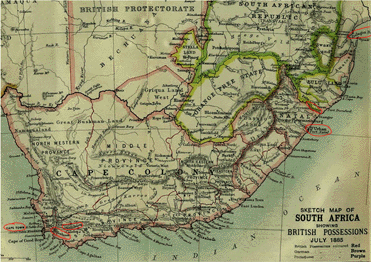 |
|||||||||||||||
|
He had settled at the river Tugela (Thukela) and lived there together with Zulu and Boer. The Zulu chief Umbanda let ask Wilhelm Gueinzius by three chiefs to become the personal physician for him and his 400 wives. He accepted the offer for economical and scientific reasons. He rent his house and tracked with an ox car to the north. However, the river bulged by numerous downpours strongly and prevented him continuing his journey. Therefore he went into the near mountains where no white man before has put his foot and lived there together with the Zulu. It began happy times for him, in which he dedicated himself collecting industriously. When the water of the Tugela was gone down again and he wanted to continue his travel, he received the message that important letters had arrived for him from home. He returned to his house. There, armed struggles between English, Boers and Zulu were broken out meanwhile [4]. He had to find his house been plundered, and his small property had been annihilated by English soldiers. He did not receive an indemnification for the loss. In such a way, he completely impoverished and returned from Port Natal to the Cape Land. Friends who were employed at agriculture accommodated him there until he again went to Cape Town at the end of 1843 [3]. |
|
||||||||||||||
|
Back in Cape TownFriends put him up too there. He became acquainted with Charlotte Tayler in Cape Town, a young lady, and sister of two English businessmen. He felt very much attracted to her. Unfortunately, his wishes after a permanent relationship to Charlotte Tayler did not met since he was completely destitute [3]. He was incidentally occupied again and again with travel plans to Ceylon in order to collect there at less attended places with greater profit. In order to moderate the pressing poverty a little, he asked Prof. Poepping to sell the collection compiled in Port Natal to Baron von Ludwig for a round sum [3]. The relationship to the druggist Juritz in Cape Town who sent his collections and letters to Europe became strained when Wilhelm Gueinzius found out, that Juritz held letters to its own advantage for a longer time back and kept appropriated collection pieces for himself. The relationship could indeed be corrected later; the old confidence however appeared no more [3]. |
|
||||||||||||||
|
Again to NatalBy a subsidy of 100 Reichstalers again new equipped, Wilhelm Gueinzius departed for the 2nd time to Port Natal in the middle of 1844 and reached on the schooner Margaret, which carried him very favourably after sixteen mostly stormy days to the new home. While his disembarkation Wilhelm Gueinzius' entire baggage was seized, because he has had gunpowder with him, what made him suspicious because of the martial circumstances. However, he finally received his baggage freely. He found the first accommodation there with his friend Campion. Only a few Boer families, which he knew of the former visit, were still living there. The most of them had left the region or had crossed the Drakensberge. A great Boer committee just came back from the Delagoo Bay. But the result of their investigation however was not yet known [3]. Heavy after eight weeks Wilhelm Gueinzius hardly fall sick at bloody dysentery and he had to lie in bed for six weeks that convalescence appeared not possible anymore. He had to sell of his beautiful big fishing net purchased before in Cape Town in order to pay for his living and the medicine. Through the sale he received sufficient money in order to keep his head above water until end of 1844 [3]. |
Schooner, since the 17th century denotation one initially two-mast sailing boat.
|
||||||||||||||
|
The disagreement with Prof. PoeppingAlthough Wilhelm Gueinzius already stayed in South Africa for more than five years, he had not yet managed it, to build up a secured existence. The illness had cost him 25 Pound (500 M). For Juritz he was also in debt in the last two years so that he wanted to remain in Port Natal as long as he would have earned 500 to 600 Reichstalers. In addition there were serious worries about his health. Not more than 27 Shillings he had to spend monthly for himself and his Zulu boy for maintenance. Now however, he collected busier as to before and expected to ship bigger objects like zebras and Zulu oxen, too. He reports home that lions would already become rarer and crocodiles in the Omgeri indeed numerously but very much more difficulty to catch, because the animals becoming more and more cautious [3]. A letter of Wilhelm Gueinzius to Prof. Poepping from Port Natal of December 12, 1848 shows his property circumstances: He was in debt to Juritz since December 23, 1843 for 885 Thaler and 22_ Groschen and since February 1, 1844 for 170 Thaler, together 1060 Thaler. Only 822 Thaler were wiped out of these from August 1843 until the letter was posted. As for the rest he blames Prof. Poepping to support him not enough. That contradicted Prof. Poepping definitely and Wilhelm Gueinzius' brother, Karl August Gueinzius, apologised himself to Prof. Poepping for his brother. The break between both was unavoidable [3]. The company, which took now on the exploitation of his gain as a collector was W. Schlüter in Halle. He collected all produce, which one can find in natural produce collections. Ornithological pieces received the museum of university in Leipzig, many rare insects the museum in Stettin, and the Ethnology Museum in Dresden an ethnographic collection of the Bantu tribes of Natal [3]. |
By him discovered too: Stangeria eriopus 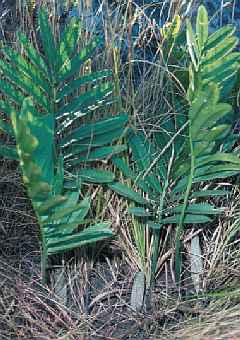 |
||||||||||||||
|
His paradiseNatal became in 1856 independent English crown colony with limited self-administration [6]. When the English had control, there was a plot assigned to him. He also put on a garden there and established himself according to his taste. He calls it his little paradise [4]. He had sat down there with German colonisers, who were recruited by one of the directors the "Natal Cotton Company", Jonas Bergtheil in Bramsche near Osnabrueck in Germany in order to cultivate cotton in Natal. The "Natal Cotton Company" was set up in the early 40ies after the British government had annexed the new colony Natal. The Bergtheil colonists settled in "Neu-Deutschland", outside the small harbour town Port Natal. "Neu-Deutschland" is today a part of the suburb Westville of the City Durban. To attempt grow cotton, however, failed very soon. The most of them survived as they supplied vegetable to the increasing city Durban. A couple of years later, the "Natal Cotton Company" were liquidated and a part of the colonisers redrew into the inland in order to settle in Neu-Hanover near Pietermaritzburg. By the presence of the Bergtheil colonists at Port Natal and their clergyman, missionary Posselt, this area belongs to the Berlin mission society. [Internet research] 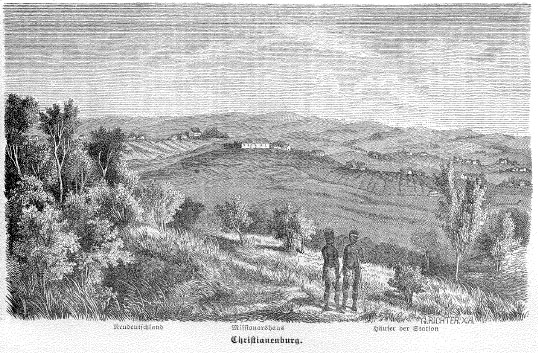 Posselt had moved into his new mission station Christianenburg in 1858. It was situated close to Neu-Deutschland. [7] Wilhelm Gueinzius' paradise was situated in a gorge that an influx into the Umgeni has cut into the plateau, more than 700 ft. deep and approx. a quarter mile wide. One can reach it from Neu-Deutschland over a narrow footpath into the primeval forest of the gorge, in which wild animals are living, like tigers, wild boars, monkeys and snakes as punch otters and boas. Further the missionary Posselt reported: "A German naturalist, named Gueinzius ... lives in this forest fissure. He leads an ingenious hermit life, very lonesome in the forest among the birds and four-foot and crawling animals with which he is brotherly compatible. He collects beetles and butterflies, stuffs birds and also frequents with the world of ghosts. ... He lives familiar with the animals. He do not only accustom the birds to himself, but also a giant snake of 15 feet of length that he had curbed and let crawl her freely in his house. On the day, it is accustomed to rest in a rolled manner. However in the night, if Gueinzius had gone to bed and the moon was shining through the window, it arose softly, straightened itself up, and went around in the house, searching an exit. It soon raised its head up to the window, lisped with its tongue, sometimes raised up, and then came down onto the bed of the naturalist who was watching it with pleasure. But its prison was intolerably, she died from heartbreak; the sad friend diverted the colored skin form it and sold it for 1 pound. Sterl. 10 Sch. He gladly shows his most interesting beetle and butterfly collection to you, ...." [7] 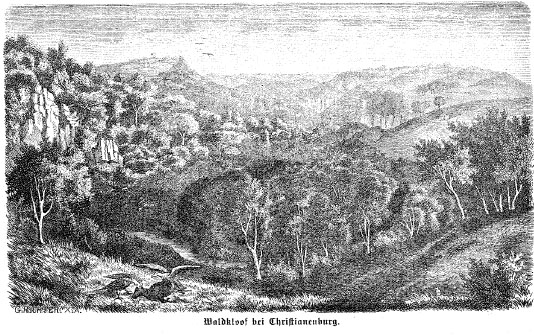 Herrmann Theodor Wangemann of the Berlin mission society visited Posselt at his inspection tour there in Neu-Deutschland at September 13, 1866 and wrote about Wilhelm Gueinzius: "Dr. Gueinzius, a naturalist that leads his hermit life there, collects beetles and butterflies, stuffed birds and associated with ghosts. ... He lives familiar with the animals, accustomed the birds to his presence, domesticate a giant snake as his bed comrade and is convinced that the animals have too much intelligence, to harm him, who means it well with them. ... With the sale of its preparations Gueinzius earns a miserable living. Occasionally is there nothing doing for a long time; then the neighbours must help out, what they are doing also. When he borrows something, he redeems completely, as soon as he has got a couple of Shilling for its collections." [6] |
|
||||||||||||||
|
His deathHe finally decided to return home to Germany. He wanted to move to Klein Lübs to his brother Karl August Gueinzius in Saxony-Anhalt. All preparations for his expected stay there were already running when the message arrived suddenly, that he had died. They have delivered him to the Grey's hospital in Pietermaritzburg where he then passed away. The hospital was built in 1856 and was the first hospital of the crown colony in Natal. His founder was the governor of the cape colony and high commissioner for bordering fields Sir George Grey (see: http://www.kznhealth.gov.za/greyshospital.htm). 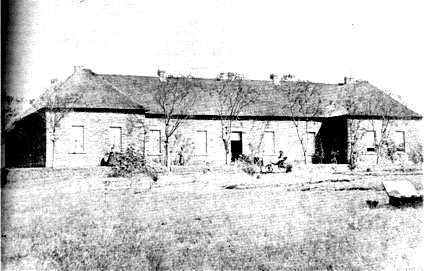 |
Web site of the Grey's Hospital in Pietermaritzburg |
||||||||||||||
|
His workHis observations on life of pricking skin-wings published E. Taschenberg in 1872 in the "Zeitschrift ges. Naturwissenschaften", no. 39, page 1 - 20. A specie published in this work was designated after him: Atractodes Gueinzii Taschenberg.
|
List of researcher at Berkley University Pteridophyta Collection in the Herbarium Hamburgense |
||||||||||||||
| Many species are designated after him: Bacillus Gueinzii. Barleria Gueinzii. Canthium Gueinzii: a medicinal plant against: Diarrhoea, dysentery, cholera, inner parasites, worms, coli bacteria etc. Combretum Gueinzii: the leaf yields a red color if it is soaked and crushed with water. |
|||||||||||||||
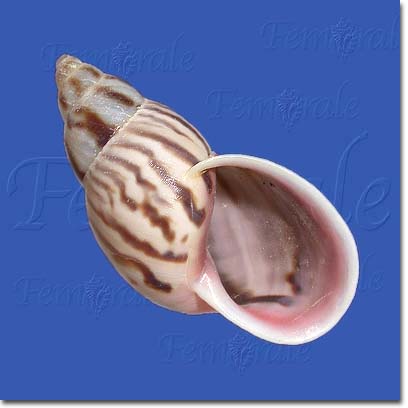 Euphorbia gueinzii, a cactus. |
|||||||||||||||
|
Also is he with the discoverers of he is orchids as collectors of the "Ansellia gigantea" to be found. 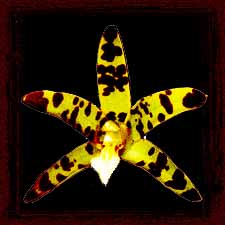 |
List of researcher of orchids About Ansellia gigantea |
||||||||||||||
Sources:
|